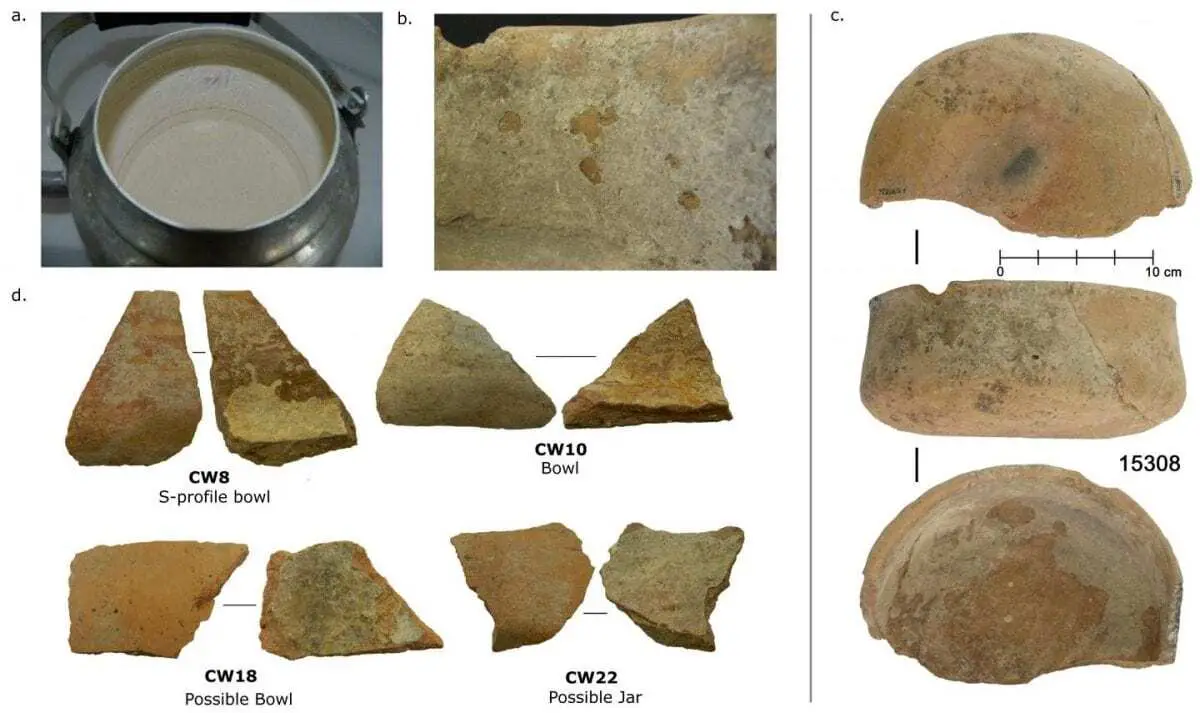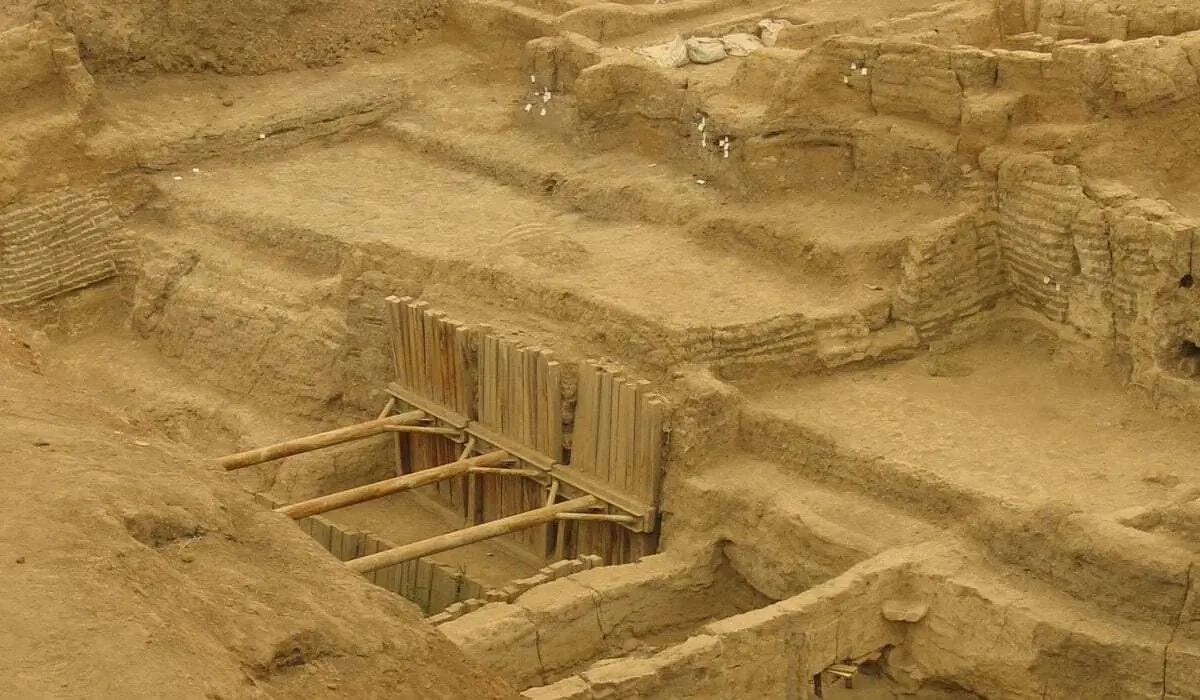Knowledge of the diet of people living in the prehistoric settlement of Çatalhöyük almost 8000 years ago has been complemented in astonishing scope and detail by analyzing proteins from their ceramic bowls and jars.
Using this new approach, an international team of researchers has determined that vessels from this early farming site in central Anatolia, in what is now Turkey, contained cereals, legumes, dairy products and meat, in some cases narrowing food items down to specific species.
An international team led by researchers from the Max Planck Institute for the Science of Human History, the Freie Universität Berlin and the University of York has uncovered details about the diet of early farmers in the central Anatolian settlement of Çatalhöyük. By analyzing proteins from residues in ancient pots and jars excavated from the site, the researchers were able to find evidence of foods that were eaten there. Although previous studies have looked at pot residues from the site, this was the first to use proteins, which can be used to identify plants and animals more specifically, sometimes down to the species level.
One of the key early farming sites in the Old World
Çatalhöyük was a large settlement inhabited from about 7100 BC to 5600 BC by early farmers, and is located in what is now central Turkey. The site showcases a fascinating layout in which houses were built directly next to each other in every direction and stands out for its excellent preservation of finds. After over 25 years of excavation and analysis, it is considered one of the best-researched early farming sites in the Old World.
For this study, the researchers analyzed vessel sherds from the West Mound of Çatalhöyük, dating to a narrow timeframe of 5900-5800 BC towards the end of the site’s occupation. The vessel sherds analyzed came from open bowls and jars, as shown by reconstructions and had calcified residues on the inside surfaces. In this region today, limescale residue on the inside of cooking pots is very common. The researchers used state-of-the-art protein analyses on samples taken from various parts of the ceramics, including the residue deposits, to determine what the vessels held.
Food proteins left behind in ceramic bowls and jars
The analysis revealed that the vessels contained grains, legumes, meat and dairy products. The dairy products were shown to have come mostly from sheep and goats, and also from the bovine (cattle) family. While bones from these animals are found across the site and earlier lipid analyses have identified milk fats in vessels, this is the first time researchers have been able to identify which animals were actually being used for their milk. In line with the plant remains found, the cereals included barley and wheat, and the legumes included peas and vetches. The non-dairy animal products, which might have included meat and blood, came primarily from the goat and sheep family, and in some cases from bovines and deer. Interestingly, many of the pots contain evidence of multiple food types in a single vessel, suggesting that the residents mixed foods in their cuisine, potentially as porridges or soups, or that some vessels were used sequentially for different food items, or both.

Early cheese-making
One particular vessel however, a jar, only had evidence for dairy products, in the form of proteins found in the whey portion of milk. “This is particularly interesting because it suggests that the residents may have been using dairy production methods that separated fresh milk into curds and whey. It also suggests that they had a special vessel for holding the whey afterwards, meaning that they used the whey for additional purposes after the curd was separated,” states Jessica Hendy, lead author, of the Max Planck Institute for the Science of Human History. These results show that dairying has been ongoing in this area since at least the 6th millennium BC, and that people used the milk of multiple difference species of animal, including cow, sheep and goat.
However, the researchers emphasize that based on the archaeological record an even greater variety of foods, especially plant foods, were likely eaten at Çatalhöyük, which either were not contained in the vessels they studied or are not present in the databases they use to identify proteins. The “shotgun” proteomic approaches used by the researchers are heavily dependent on reference sequence databases, and many plant species are not represented or have limited representation. “For example, there are only 6 protein sequences for vetch in the databases. For wheat, there are almost 145,000,” explains Hendy. “An important aspect of future work will need to be expanding these databases with more reference sequences.”
The potential of protein analysis on archaeological ceramics
Other molecular techniques applied to ancient pottery can reveal broad classes of food – such as evidence of dairy or animal fat – but an analysis of proteins allows a much more detailed picture of past cuisine. The results of this study show the power of protein analyses, which can identify foodstuffs in situ down to the species level, in samples as old as 8000 years. In particular, the residues on the insides of the ceramics were exceptionally well-preserved and contained a wealth of information. The removal of these residues can be a common practice among archaeologists as part of the preservation and cleaning process. “These results highlight how valuable these deposits can be, and we encourage colleagues to retain them during post-excavation processing and cleaning,” states Eva Rosenstock of the Freie Universität Berlin and the senior author of the study.
MAX PLANCK INSTITUTE FOR THE SCIENCE OF HUMAN HISTORY
Header Image: Çatalhöyük – Credit : Dr. Colleen Morgan





